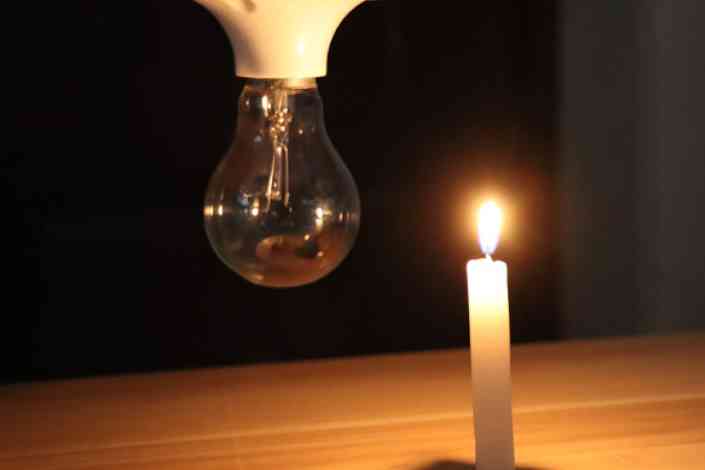
Zimbabwe has been experiencing recurring power supply shortages from as far as back as 2003 with intense power cuts in 2006, 2009, 2011, 2013, 2017, 2019, 2022 and 2023. The power cuts are only getting worse in each year as consumer demand outpaces supply and old thermal plants buckle under over usage.
After the recent synchronisation of Hwange 7 to the national grid, the country is now producing 950MW against a national demand of approximately 1 600MW. Zimbabwe has a contract to supply NamPower of Namibia with at least 80MW. Namibia provided US$40 million under an agreement to refurbish a coal-fired Hwange Power Plant in 2007 in exchange for guaranteed supplies. This leaves the country with a deficit of at least 730MW, which is being partly met through widespread load shedding and importing 400MW (at most) from regional peers such as Zambia, Mozambique and South Africa.
Heavy business consumers of electricity such as mines, manufacturers and retailers are feeling the heat as cost of production has skyrocketed due to usage of diesel-powered generators in production. Small businesses are facing serious viability challenges with no end in sight.
No end in sight
The boom in global commodity prices has resulted in increased investment in Zimbabwe’s mining sector especially in gold, PGMs, lithium, iron and steel and chrome. Various exploration projects and revival of closed mines mean that several mines will be added to the national grid in the short to medium term.
Applications by the mining sector alone in the short-term (before end of 2023) now exceed 2 100MW. Thus, total energy demand in the country is expected to rise to at least 3 800MW by 2025. This means that power cuts will be protracted and without sufficient investment, power shortages pose the greatest risk to Zimbabwe’s economy for the whole decade under (Vision 2030).
Limited investment and tender chaos
Zimbabwe is heavily reliant on old power stations which have been running nonstop for decades. The old Hwange Power Units were commissioned between 1983 and 1986 with installed capacity of 920MW. The units use old technology from the 1960s, which explains the frequent breakdowns.
- Zim headed for a political dead heat in 2023
- Record breaker Mpofu revisits difficult upbringing
- Tendo Electronics eyes Africa after TelOne deal
- Record breaker Mpofu revisits difficult upbringing
Keep Reading
Munyati Power Station was built between 1946 and 1957 with a design capacity of 120MW but is currently producing 17MW. A plan to repower the plant for US$133 million never saw daylight as the entities that won the tender (Intratrek and Jaguar Overseas Limited) have limited experience in power projects.
Harare Power Station was built in 1942 and 1955 in phases with a maximum capacity to produce 156MW, but is currently producing nothing.
In 2014, Jaguar Overseas (from India) was awarded a US$70,2 million tender to repower its three operating units up to 90MW. Again, the project flopped, and the government has not seen it fit to commit domestic resources to it.
Bulawayo Power Station was commissioned between 1947 and 1957 with an installed capacity of 120MW and is not producing any power now. In 2016, a tender to repower the plant and add 90MW to the grid before 2018 was awarded to Jaguar Overseas.
In the late 2019, the government cancelled the project stating that the US$87 million loan from India’s Exim bank for the project had not been signed and the contractor (Jaguar Overseas) had failed to secure sufficient funding for the project. In all this, it is critical to point that less 1 600MW (including Hwange 7&8) was added to the grid over the last 50 years. For this funding, the government has only been the guarantor.
Investing in other countries
To meet part of the supply gap and import 400MW, the Zimbabwe Electricity Supply Authority (Zesa) imports power worth at least US$20 to US$25 million every month. The power is imported from EDM and HCB of Mozambique, Eskom of South Africa, Zesco of Zambia and from the Southern Africa Power Pool (SAPP).
At some point, legacy debt to Eskom exceeded US$80 million. This means that at least US$250 million is paid upfront per year to regional suppliers instead of local producers. The amount would be enough to add at least 200MW to the grid through rehabilitating Bulawayo and Harare power stations.
The government has folded its arms on investing and persistently quotes global financiers when investment into fossil power projects has dwindled due to climate concerns (at least before the Ukraine War). The government would have used the IMF-sponsored SDR windfall of US$958 million for such projects. However, the opportunity was missed.
Prioritising own resources or bilateral loans (where possible), the government must craft a plan of rehabilitating Munyati, Harare and Bulawayo Power Stations over a period of not more than 3 years. Between 2017 and 2022, the government invested more than US$3 billion from tax revenues or local debt in command agriculture and other schemes to boost agriculture productivity. This means that funding is not a challenge where political will exists.
Dema wastage
The 200MW Dema Power Project was controversially awarded to Sakunda Holdings in 2016 even though the company had not participated in the public tender process.
The project, which involved installation of Diesel Generators was won by an American company called APR Energy Holdings, however it was later handed over to Sakunda Holdings which was politically connected. After winning the tender, the inexperienced Sakunda subcontracted Aggreko which had been disqualified by the State Procurement Board (SPB) because of its high costs and failure to meet technical specifications. The cost of the project later escalated from US$249 million to US$498 million after the government directed the suppliers to double output from 100MW to 200MW at a cost of US$166 million per year despite the fact that Zimbabwe was failing to import cheaper electricity from regional suppliers in 2016.
APR Energy later revealed that Zimbabwe could have saved US$200 million over three years had it explored the use of liquid petroleum gas instead of diesel-powered generators at Dema. Currently, the Dema Power plant is mothballed as its electricity generation cost of US$0,1545/kWh (when duty free diesel is used) is far more than the cost to import power from the region. The US$498 million could have delivered a 500MW solar farm.
Batoka Gorge project
In 2019, a consortium of Power Construction Corporation from China and General Electric from the United States won a bid to construct the 2 400MW hydropower station on a build, operate and transfer (BOT) funding model for US$4,5 billion. The output would be split evenly between Zambia and Zimbabwe. Construction had been scheduled to commence in 2020 before the Covid-19 pandemic struck.
The project has stalled because the consortium has failed to secure funding due to Zimbabwe and Zambia indebtedness to China. It is now critical for Harare to engage Zambia to retender for the project or identify alternative public and private financiers such as the Africa Development Bank (AfDB) to the BOT project ass a long-term solution to the power crisis.
Potential Zambezi River projects
The hydropower potential of the Zambezi River Basin is estimated at 20 000MW of which only 5 000MW has been developed. However, only 23% of this potential is being harnessed, largely from the Kariba Dam, and the Cahora Bassa Dam in Mozambique.
Potential new sites include the Devils Gorge and Mupata Gorge which need forward planning and engagement of Zambia and Mozambique to initiate plans on feasibility studies carried out in 1992.
IPPs incentives
The government has so far licensed 91 Independent Power Producers (IPPs) projects with installed capacity of 7 000MW. Contribution from IPPs falls below 100MW and most projects are struggling to take off.
Zesa often struggles to pay the current IPPs due to viability and exchange rate issues. Most IPPs cannot secure funding due to the subeconomic tariff (below 13 USc/kWh), among other hurdles such as currency fluctuations and harsh foreign exchange regime. High production costs also affect the economic viability of capex heavy projects, just in as much as inadequate transmission infrastructure does.
Investors are also demanding bankable Power Purchase Agreements (PPAs) which are long term offtake agreements with a creditworthy buyer. Unfortunately, Zesa is deemed as not being creditworthy enough to allow debt repayment or a predictable revenue stream.
As such, the government needs to allow IPPs to structure their own tariffs and engage potential consumers (even regionally) as supply cannot match demand in the foreseeable future. Tax subsidies and other incentives should be afforded to IPPs to incentivise investment. Renewable energy offers the best plan for Zimbabwe to use Kariba Power Station as base load.
The true cost of the power cuts is immeasurable especially for small businesses who cannot cope with alternative energy. The increase in the cost of production, job retrenchments, loss of export markets and loss of foreign currency for large corporates is immense.
Frequent droughts and major faults at Hwange Power Station serve as a reminder that a long-term solution is urgently needed. The government cannot avoid investing own funds and engaging parties to potential projects. Resorting to load shedding shows how government has become so comfortable with the abnormal where only 25% of the country has access to power during productive hours of the day.
Bhoroma is an economic analyst and holds an MBA from the University of Zimbabwe. — vbhoroma@gmail.com or Twitter: @VictorBhoroma1.






